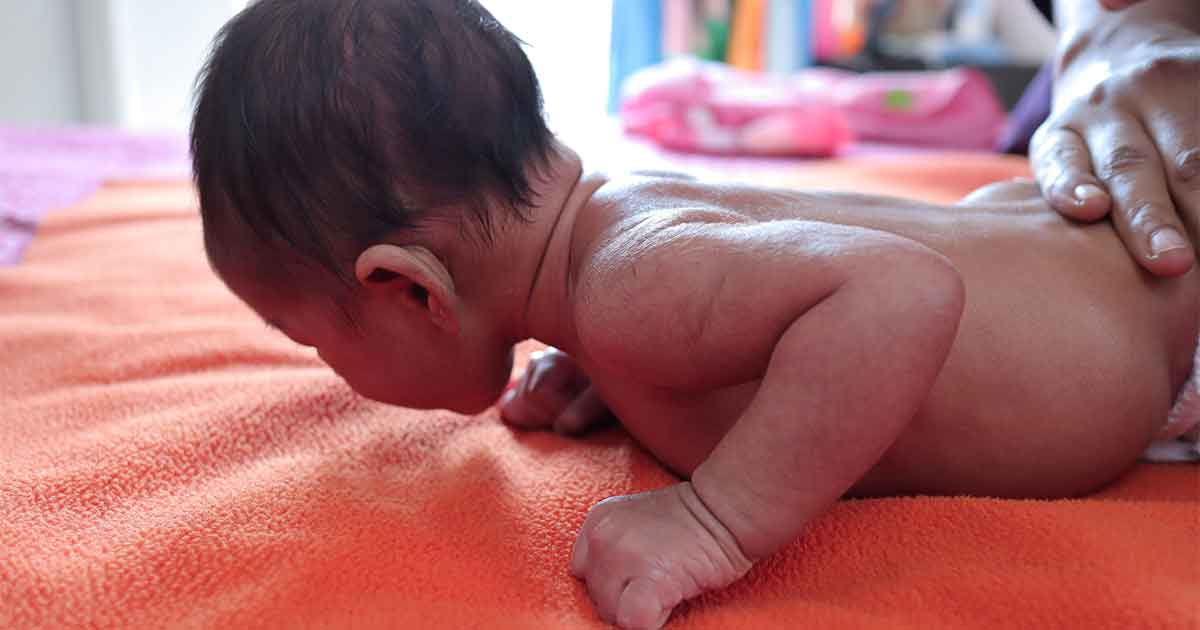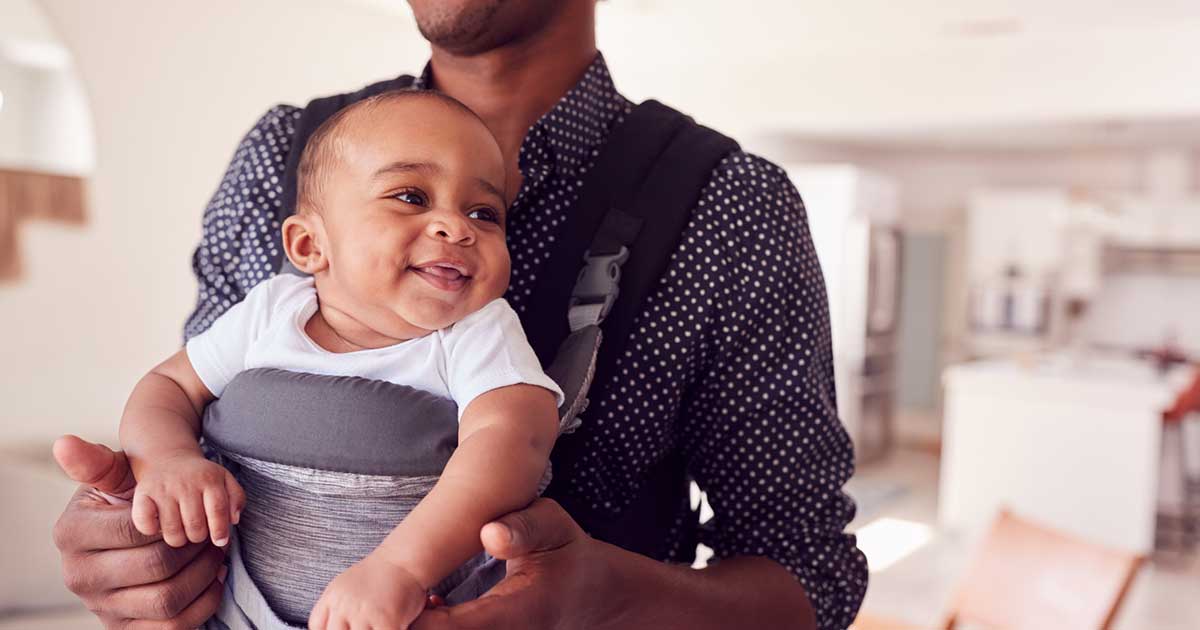Does Your Baby's Head Tilt to One Side? It May Be a Sign of Torticollis
Advice to improve your movement, fitness, and overall health from the world's #1 in orthopedics.
As most new parents know, babies can be very particular about their likes and dislikes. Many of these preferences are harmless, but one in particular can be linked to a musculoskeletal condition that can impact an infant’s growth and development. Any child can develop it, so all parents should be on the lookout.

Called congenital muscular torticollis (CMT), this condition is caused by a shortening of the muscle that bends and turns the head and neck. Babies with CMT typically tilt their heads to one side and prefer to face in the opposite direction. Often, there’s also a flattening of the back of the baby’s head on the side he or she prefers to turn to.
In most cases, CMT is successfully treated with physical therapy. But there are gentle range of motion and strengthening exercises parents can do at home to complement the physical therapy routine, along with general guidelines for holding and positioning the baby.
HSS pediatric physical therapists Frances Baratta-Ziska and Magdalena Oledzka offer these suggestions for parents and caregivers to try at home to either prevent CMT or to complement physical therapy treatments.
1. Carry your baby.
Too much time in car seats, swings, strollers and bouncers can restrict a baby’s movement and cause prolonged pressure on the back of the head. Carrying your baby in your arms or in a sling or carrier whenever you can will give your child more freedom to turn from side to side. It’s also important to give your baby time to move and play freely in a playpen or on a blanket on the floor, with adult supervision.
If you do use a carrier, change the position often to encourage your baby to look in different directions. Front carriers can be used for babies who are too small to hold their heads up on their own, with the baby facing inward. Once they have good head control, babies can be placed facing away from the adult who’s carrying them. If you notice your child’s head turned to one side or the other when in the car seat or stroller, gently turn it to the center.
2. Increase tummy time.
Anyone who’s ever been around a young baby is probably familiar with the importance of tummy time. Spending time on their bellies while awake encourages infants to strengthen their neck, shoulder, arm and back muscles, which is necessary for head control and to roll, sit and crawl. Tummy time also helps avoid flattening on the back of the head.
Try to get in at least 15 minutes of tummy time four times per day. If your baby is unable to tolerate being in this position for the whole time, use shorter intervals more frequently throughout the day, building up to the full 15 minutes.
Another tip: Babies love to look at faces. Positioning your infant on your chest or lap will encourage them to lift their head to look at you. You can also place a mirror in front of your baby’s face, since babies love to look at themselves too! Again, however you set up for tummy time, it’s crucial that your baby is awake and supervised by an adult.
3. Encourage specific types of play.
Activities that use both the hands and legs position a baby’s body at midline, or the center of the body. Infants commonly play by bringing their hands together and their feet up to their hands, which strengthens their belly muscles and prepares them for rolling. Encourage your baby to reach for toys and rattles equally with either hand. Also keep your baby’s head centered when in your lap.
You can also influence the direction your baby looks by placing toys on both sides. Use toys with lights and sounds to entice your baby to actively turn from side to side, whether on the tummy or the back.
4. Alternate feeding positions.
Switch up the arm with which you hold your infant during feeding. Whether breast or bottle feeding, it’s important to change positions—for each feeding session, if possible—to give your baby an opportunity to turn the head to both sides.
5. Position the head for sleep.
When you put your baby down for the night (always on the back), alternate the side to which the head turns to prevent a flat spot from developing. You can alternate which end of the crib is the top end so that the baby is encouraged to look out in all directions.
Published 10/1/2021






